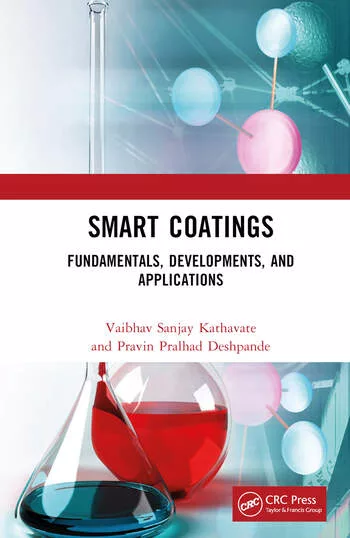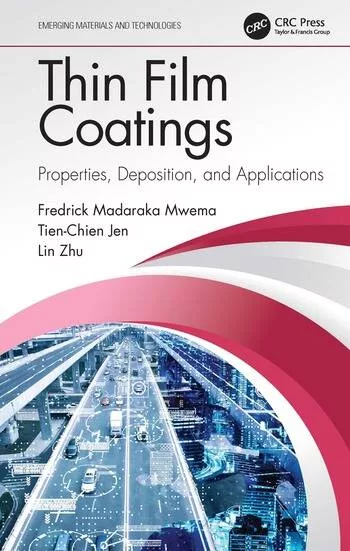Spherical Fillers in Low-VOC Coatings Applications














The uses and advantages that ceramic microspheres offer architectural coatings applications are well documented and constantly expanding with the introduction of new additives and binder technologies. These spherical, hard particles offer formulators opportunities to lower binder demand and control viscosity and VOCs while increasing burnish and scrub resistance. The industrial coatings market is another large market segment that is being driven toward zero-VOC coatings with improved performance properties. This application study involves the evaluation of spherical ceramic microspheres and hollow glass bubbles versus other conventional fillers in a high-solids, two-part epoxy coating.
Epoxy finishes are often used for their excellent chemical and stain resistance properties in addition to their overall film durability, which can include properties such as scratch and abrasion resistance. In two-component systems, one of the primary goals for formulators is to extend pot life and working time by looking for ways to keep the viscosity constant during application without having to add solvents, which negatively affect VOCs. The addition of solvent also decreases the percent solids and can affect application and dry time properties. This study evaluates various fillers and their effects on formulation parameters such as viscosity, and final film performance properties, such as hardness and abrasion resistance.
Experimental Methods and Materials
A standard two-part epoxy formulation was utilized as a starting point for all filler evaluations (Table 11). This prototype formulation is designed to discriminate between the fillers studied. Optimization is recommended for target applications. This could include additional pigments such as colored, anticorrosive and other fillers. In part A, the epoxy resin, defoamer and fluorosurfactant were added first, followed by the filler pigment. Each particular filler pigment was added at a 7.26% volume loading based on density (example shown in Table 1 formulation is for ceramic microspheres/fillers A and E). Thus, each system had a pigment volume concentration (PVC) of 7.26. The basic properties of the fillers evaluated are shown in Table 2.1
A Cowles blade was used for all formulations, and part A was mixed for 15 min at 5000 rpm. A conventional impeller blade was used to mix the glass bubbles at much lower mixing speeds (1500 rpm). After 15 min, the diluent was added. For part B, the amine curative was added just prior to application at a mix ratio of 2.8:1 by weight A:B.
PVC Ladder Experiment
In the PVC ladder experiment, fillers A and B were increased in PVC from 0 to 42%, and the viscosity was monitored over time. Solvent was added to each system to lower the viscosity to an appropriate working application viscosity (approximately 3000 cps), and the theoretical VOCs were calculated. This experiment was performed to show the effect of two different fillers on the binder demand at increasing PVC, and how this is related to application viscosity and VOC control.
Test Methods
Application: A 3 mil bird bar and #28 wire wound rod were used to deposit the 3.0 and 1.5 mil films respectively on standard, cleaned, 3003-type aluminum panels. All panels were air dried for the specified amount of time in each test.
Viscosity: Measurements were conducted with a Brookfield DV-II+ Pro viscometer using a #3 spindle at 6 rpm and ambient conditions.
Color Measurements: Yellowness values (B value) were measured with a standard spectrophotometer. Higher B values indicate more yellowing of the film.
König Hardness: Measurements were conducted with a standard König pendulum hardness instrument. The higher number of oscillations indicates a harder film surface.
Stain resistance: A modification of ASTM D1308 was used with a 4 h open spot test followed by a visual rating system. A rating of 10 signifies no change, while a rating of 0 signifies severe softening, gloss loss or change of color. Numbers in between represent degrees of severity.
Abrasion: A standard Taber abraser Model 5150 machine was used with a 1000 gram load and CS-10 wheels. Panels were aged a minimum of 21 days before testing.
Results
The first property evaluated was viscosity as related to pot-life or effective working time. Parts A and B were mixed and monitored over time. Results are shown in Figure 1.
Results show a lower viscosity (working range <3000 cps) in the 45-55 min range with the ceramic microspheres and glass bubbles (enlargement in Figure 2). Fillers B and D reach the 3000 cps viscosity at 45-48 min, while fillers A, C and E are in the 52-56 min range. This additional time can be important in these two-part systems, which have a limited pot life, thus adding valuable working time with the product.
The first example involves simple replacement of one filler at a time in a clear system. Many formulations for the civil engineering markets require pigmented/colored systems at higher PVCs. Formulating at higher PVCs can be challenging depending on the filler’s demand for binder, which is based on oil absorption and particle geometry, and their relationship to viscosity and VOC control. As shown in Figures 1 and 2, changing fillers can affect parameters such as viscosity. This in turn may cause application issues, which may require the addition of solvent for aesthetically acceptable films.
The next example involves increasing the PVC of two fillers, A and B, to 42%. A 42 PVC sample was made for both fillers. The initial viscosity was >15,000 cps for both samples, so solvent was added to target an acceptable initial application viscosity. Then the viscosity was measured over time. After 45 min, the calcium carbonate sample (B) was much higher in viscosity and had a resulting VOC about 1.5 times higher than sample (A), ceramic microsphere 1 (Figure 3a).
A more detailed analysis of filler A is described in Table 3. This depicts a PVC ladder of filler A (ceramic microsphere 1) and the effects of higher PVC levels on viscosity and VOCs. Solvent was not added until the PVC was above 16.4, and then the addition of <1 lb/gal made the mix usable for more than 1 h at a viscosity less than 2500 cps. The higher PVC/lower VOC capabilities with the ceramic microspheres are a result of the particle geometry/shape (low surface area to volume ratio in a sphere) and the resulting low oil absorption values.
Pictures of a ceramic microsphere versus conventional calcium carbonate are shown in Figure 3b. Depending on the system and the raw material costs, formulators may also be able to reduce cost(s) at higher PVCs by reducing binder demand. This is shown in Table 3 where the relative cost index is lowered by 12% with the addition of filler A. Increasing the PVC with other fillers can also lower the cost index, but one must keep in mind the other properties such as viscosity and VOCs.
Figure 4 shows the color results as related to yellowing for a PVC of 7.26. For the fillers studied, the ceramic microspheres had the smallest effect on film yellowing.
The effects of filler type on gloss were also examined. At 3-4 mil dry film thickness, the glass bubbles had the largest effect on lowering the gloss, while the other fillers demonstrated similar results to each other (Figure 5). This was also true at lower dry film thicknesses. It should be noted that the filler particle size and distribution can have a large effect on appearance and gloss of the dried film at the lower film thicknesses. Filler (A), ceramic microsphere 1, and filler (C), glass bubble, tend to yield coarser/texture type finishes at dry films <1.5 mils.
Chemical resistance tests were also conducted on 3 mil films that had aged for a minimum of 2 weeks. Fillers A and B were examined in this study, and results did not show any differences between the fillers (Figure 6). Both performed well for all stains except sulfuric acid when subjected to a 4 h spot test. Films stained with sulfuric acid exhibited whitening.
König hardness measurements were conducted at two different film thicknesses after a seven day air drying period. Results are shown in Figure 7.
Filler E performed very well at both film thicknesses when comparing to sample F, which does not contain filler. Fillers A and D performed similarly, and filler C gave slightly harder films than filler B.
Abrasion Testing
Figure 8 depicts the results in weight loss (mg), and Figure 9 shows results in the number of cycles to failure/mil of cured film.
The best overall abrasion resistance is seen with fillers A and E (ceramic microspheres 1 and 2). The epoxy clear without any filler also performed very well. Glass bubbles and aluminum silicate performed similarly, and the calcium carbonate exhibited the greatest amount of wear through and weight loss. A pictorial representation of wear resistance is shown in Figure 10. Fillers A and E show the least amount of wear through, and fillers B and D exhibit the most wear after 750 cycles. Wear through in this example is defined as total removal of coating to expose the base aluminum substrate.
It should also be noted that filler E offers the closest visual clarity to the blank control (filler F). This may be important for formulators who are trying to increase solids and lower VOCs while maintaining appearance and performance requirements such as abrasion resistance and hardness.
Summary
Selecting the proper filler for a coating system is extremely important, as formulators must evaluate both the physical properties of the filler pigment and the final performance characteristics desired for the particular end use. Filler selection can impact many properties such as viscosity, settling, opacity, gloss, hardness, color, and chemical and abrasion performance.
Ceramic microspheres and glass bubbles may offer formulators cost-effective options for formulation of high-solids coatings, including 2K epoxy systems. These spherical fillers offer the advantage of formulations in higher-PVC regions while maintaining low-VOC and application viscosity profiles. Depending on the formulators’ needs, they may be added to control gloss while maintaining or improving mechanical properties such as film hardness, abrasion resistance and stain resistance.
Future studies involve investigation of these spherical fillers in other industrial coatings applications.
References
1 Ceramic microsphere 1 = 3M™ Ceramic microsphere W-610; Ceramic Microsphere 2 = 3M Ceramic Microsphere W-210; Glass Bubble = 3M Glass bubbles iM16K; Fluorosurfactant =3M Fluorosurfactant FC-4430; Epoxy resin =D.E.R.™ 331™ Liquid Epoxy resin from Dow Chemical; Diluent = Epodil® 748 reactive diluent from Air Products and Chemicals, Inc.; Modified Cycloaliphatic amine curative = Ancamine® 2726 Curative from Air Products and Chemicals, Inc.
2 Wypych, G., Handbook of Fillers, 1999.
3 ASTM Methods D523, D7091, D4060, D4366, D281, D1308.
Acknowledgements and Special Note
The author would like to acknowledge Terri Shefelbine, Ph.D., and Connie Forehand. Technical information, recommendations and other statements contained in this document or provided by 3M personnel are based on tests or experience that 3M believes are reliable, but the accuracy or completeness of such information is not guaranteed.
For more information, contact Kevin Rink at kjrink@mmm.com.
Looking for a reprint of this article?
From high-res PDFs to custom plaques, order your copy today!







